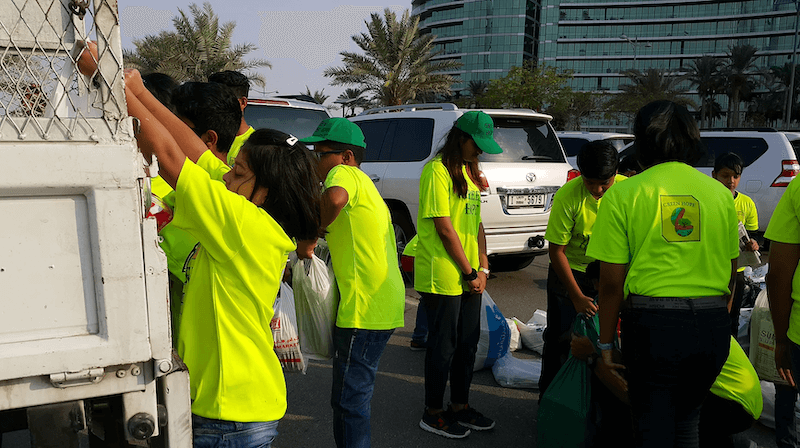Young people are angry, but this isn’t some kind of misdirected teenage angst, it’s organized and it’s focused, namely on the world’s biggest issues and misjudices. From teen celebrities such as Stranger Thing’s Millie Bobby Brown being elected as Unicef’s youngest ever Goodwill Ambassador, to climate activists like Greta Thunberg who’s book ‘No one Is Too Small To Make A Difference’ has been published by Penguin, to gun-shooting survivors such as Emma Gonzalez demanding gun control in America, young people are speaking up about the issues that matter to them.
Covering the wide landscape of today’s problems including period poverty, climate change, gun control, diversity in the media and LGBTQIA+ visibility, young people are calling out the injustices they see in the world and taking matters into their own hands. It’s inspiring to see a generation that has been labeled lazy, apathetic and (the hideously derogatory term) ‘snowflake’, respond in such a positive and empowering way. So what can we do as educators to support their passion and help them to raise their voices even louder on the issues that matter to them?
In time-deficient schools, it can be difficult to know how to provide the space needed to confront the issues facing today’s students. Challenge 59 however, has come up with a unique solution to provide the arts in a powerful, yet small way. Through Challenge 59 students create 59-second films that focus on a health issue that’s important to them and which they want to share with their community. Working with children who often don’t have access to the arts outside of school, Challenge 59 helps them to harness the power of film to tell their stories and to activate change in their communities.

The films focus on issues directly affecting the children, helping them to recognize what they’re experiencing and activating them to do something about it. Past films have been shown on the BBC and at the BFI, and have focused on health issues such as the risks of screentime, lack of open spaces, mental health, peer pressure, passive smoking, and the importance of free play. The children create the film from scratch, from idea creation to storyboarding to filming.
One story the children came up with looking at the barriers that may stop people from being active. The story followed someone who was classed as a ‘couch potato’ only for them to reveal that they weren’t actually lazy, but that they were unconfident, shy and didn’t have the right support networks or activities available in order to be active.
By getting behind the issues affecting them, children can voice their concerns in a safe, supported and creative way, that can create real change for both themselves and their communities. Challenge 59 also uses dance as a vehicle to connect children to their bodies so they can understand themselves better, focusing on connecting them to their mental, emotional, relational and spiritual health.
“Our evaluation showed that children enjoyed going to school more after the project,” says Challenge 59 Founder, Jo Rhodes. “The films helped to raise their aspirations, gave them a sense of achievement, improved their self-perceptions and confidence in expressing themselves.”
The arts can be an extremely effective tool to translate and communicate important issues in a way that connects deeply with audiences, no matter their backgrounds or cultures. Green Hope Foundation also uses the arts to communicate important issues, with their focus being on climate change and sustainability.
Green Hope organizes ‘Environment Academies’, workshops which are created by and for young people, with a particular focus on empowering the world’s most marginalized children. The academies educate participants on the UN’s Sustainable Development Goals, using the mediums of art, music, dance, sport and drama. The use of the arts helps to overcome language and cultural barriers which allows for their message to spread globally and across social settings, from schools in Toronto and Manhattan, to child prisoners in Kenya, to refugee camps in Syria.
Established in 2012, Green Hope Foundation was created by Kehkashan Basu when she was just twelve years old. Having been to Rio+20 (also known as the Earth Summit), Basu had been one of the youngest international delegates at the conference and was struck by how her future was being decided by adults, many of whom wouldn’t be around to live through the monumental outcomes of climate change, and so weren’t as invested in protecting the planet as she (and other children) would be. Over the course of just six years, Green Hope has evolved into having over one thousand members in thirteen countries.

‘Our world has more young people than ever before and yet we continue to be under-represented and marginalized. Our future is decided by adults who only care for the present and their myopic policies are degrading the environment to such an extent that our future is under threat,’ says Basu. ‘We, the youth, must be in charge of our own destiny and deeply involved in all aspects of agenda-setting, policy-making and implementation of the SDGs so that we can create and shape the future we want; a future that is just, equitable, peaceful and inclusive.’
To create active change, the workshops are complemented with ground-level actions for young people to participate in. ‘Participants implement community projects to mitigate specific challenges that range from climate change, gender parity, biodiversity conservation, clean energy, sustainable consumption, peacebuilding, and social justice,’ explains Basu.
In a world where polarized views are on the rise and algorithms help to add fuel to the argumentative fire, it is vital for young people to build the skills to advocate for peace. Through constructive conversations, young people can explain what life is like for them and learn to listen to the experiences of others, in order to both overcome conflicts and to have their voice heard.
Specifically working with children from conflict-affected regions, such as Myanmar, Cambodia and Thailand, Initiative For Peace trains students for six months in becoming peace-builders and facilitators, learning skills in peace and conflict theory, project management, digital literacy, planning, communication and active listening. Over the following five months, they plan and prepare a youth conference to discuss the issues that are affecting them, resulting in an entirely youth-led conference specifically for young people.

At the conference, young people live, eat and attend the conference together, giving them the opportunity to meet people from all different backgrounds, and discover the real people behind those who may be on the opposing side to them. Attendees also bring along items that represent their culture and give presentations on them, so they can both celebrate their culture and learn from others about their cultures too. Finishing the conference, young people do an active task together to put into practice their new skills and discuss what it is they’re taking away from the event, to solidify their learning.
By teaching young people in a real emotive way, how to overcome conflict and to work collaboratively with those they may view as being the ‘enemy’, gives them the powerful tools they need to empower both themselves and others. In a time where arguments are quick and hot-headed, thanks to ineffective communication tools like social media, every young person (and old) could benefit from understanding where someone else’s ideas are coming from and learning how to hold constructive, peace-building conversations.
Giving young people the opportunity to learn how to use their voice for good and feel empowered to do so not only gives them the vital skills in conflict resolution and communication so the issues that affect them are heard, but it fits with how the world works today. With social media, the internet, and everyday technologies, it’s easier than ever for young people to connect and communicate their ideas, thoughts and worries with others', and they’re switched on to the many issues around the world today whether they’re directly affected by them themselves or not. Through educational initiatives such as Challenge 59, Initiative for Peace and Green Hope Foundation, young people learn to use their voice to activate real change and finally are able to have their voices heard and, most importantly, listened to.
Explore the innovations pages for Challenge 59, Green Hope Foundation & Initiative For Peace for more information.

